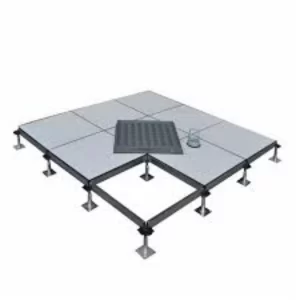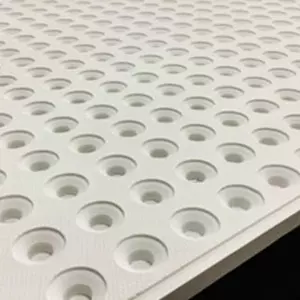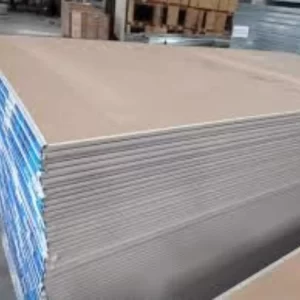Installing Raised Access Flooring in a Commercial Space
Introduction
Raised Access Flooring in a Commercial Space In today’s modern commercial environments, the need for flexible and efficient infrastructure is crucial. Raised access flooring, also known as access floors or raised floors, provides a solution that meets these requirements. It involves the installation of a raised floor system above the original floor surface, creating an accessible void for various utilities, such as electrical wiring, data cables, and HVAC systems.

2. Understanding Raised Access Flooring
Raised access flooring consists of modular floor panels that are supported by adjustable pedestals or stringers. These panels are typically made from materials like steel, concrete, or wood and can be easily installed and reconfigured as needed. The space beneath the raised floor provides a concealed pathway for essential services, allowing for easy access, maintenance, and changes without the need for extensive disruptions.
3. Planning and Preparation
Before installing raised access flooring, careful planning and preparation are essential.
3.1 Assessing Requirements
Evaluate the specific needs of your commercial space, such as load requirements, anticipated foot traffic, and the types of utilities that need to be accommodated. This assessment will help determine the appropriate type and specifications of the raised access flooring system.
3.2 Designing the Layout
Work with an experienced architect or designer to create a comprehensive layout plan for the raised access flooring. Consider factors such as access points, location of service outlets, and any specific requirements for different areas within the space.
3.3 Obtaining Necessary Permits
Check with local authorities and building regulations to ensure compliance and obtain any required permits for the installation of raised access flooring. Adhering to these regulations is crucial to ensure the safety and legality of the project.
4. Selecting the Right Materials
Choosing the appropriate materials for your raised access flooring system is vital for its performance and longevity. Consider factors such as load-bearing capacity, fire resistance, and acoustic properties. Consult with flooring specialists or suppliers to determine the most suitable materials for your specific needs.
5. Installation Process
The installation of raised access flooring typically involves the following steps:
5.1 Preparing the Subfloor
Ensure that the subfloor is clean, level, and free from any debris or obstacles. This step is crucial to ensure the stability and proper alignment of the raised access flooring system.
5.2 Placing the Pedestals or Stringers
Install the pedestals or stringers according to the layout plan, ensuring they are positioned correctly and securely attached to the subfloor. These components act as the support system for the raised floor panels.
5.3 Installing the Floor Panels
Carefully lay the floor panels on top of the pedestals or stringers, aligning them properly and securely interlocking them. Ensure that the panels are level and create a smooth and even surface.
5.4 Securing the Panels
Once the panels are in place, secure them using locking systems or fasteners to prevent any movement or dislodging.
6. Wiring and Cabling
One of the primary advantages of raised access flooring is the ability to conceal and manage wiring and cabling systems. During the installation process, incorporate appropriate channels and access points to accommodate the necessary electrical, data, and communication infrastructure.
7. Finishing Touches
After the installation of the raised access flooring system and wiring, it’s time for the finishing touches. This includes installing the desired floor covering, such as carpet tiles, vinyl, or laminate, to enhance the aesthetic appeal of the space.
8. Maintenance and Care
To ensure the longevity and performance of your raised access flooring, regular maintenance and care are crucial. This includes cleaning the surface, inspecting for any damage or wear, and addressing any issues promptly. Follow the manufacturer’s guidelines for maintenance and consult professionals for specialized care, if necessary.
9. Advantages of Raised Access Flooring
Raised access flooring offers several advantages for commercial spaces, including:
- Flexibility and adaptability for changes in infrastructure
- Enhanced accessibility for maintenance and repairs
- Improved air circulation and HVAC efficiency
- Concealed wiring and cabling for a clean and organized appearance
- Sound insulation and reduction of noise transmission
- Aesthetically pleasing and professional look
Conclusion – Installing Raised Access Flooring in a Commercial Space
Installing raised access flooring in a commercial space provides a practical and efficient solution for managing utilities and infrastructure. By following the appropriate planning, selecting the right materials, and executing a proper installation process, you can create a versatile environment that meets the changing needs of your business.
Frequently Asked Question- Installing Raised Access Flooring in a Commercial Space
1: What is the load-bearing capacity of raised access flooring?
Answer: The load-bearing capacity varies depending on the materials used and the specific system. It’s important to consult with flooring specialists or suppliers to determine the appropriate load-bearing capacity for your requirements.
2: Can raised access flooring be customized to fit irregularly shaped spaces?
Answer: Yes, raised access flooring can be customized to fit irregularly shaped spaces. The modular nature of the system allows for flexibility in design and adaptation to various layouts.
3: Can I install underfloor heating with raised access flooring?
Answer: Yes, underfloor heating can be installed with raised access flooring. However, it’s important to consult with experts to ensure compatibility and proper installation techniques.
4: How often should raised access flooring be inspected for maintenance?
Answer: Regular inspections are recommended to identify any issues or signs of wear. Depending on the usage and specific requirements of your commercial space, inspections can be conducted annually or semi-annually.
5: Can I change the floor covering without disrupting the raised access flooring system?
Answer: Yes, one of the advantages of raised access flooring is its ability to accommodate changes easily. The floor covering can be replaced or updated without major disruptions to the underlying system.
Other Products

Grg ceiling tiles

Gypsum boards

Magnesium oxide board
Contact Us
Mobile: +919008400701 / 705
Email: sales@jayswalgroup.com

Visit Us
Address:
#6, 10th B Cross, Jayswal Center, KHB Main Road, Kaveri Nagar, Kanakanagar, RT Nagar, Bangalore – 560032, Karnataka, India.
Other Websites: